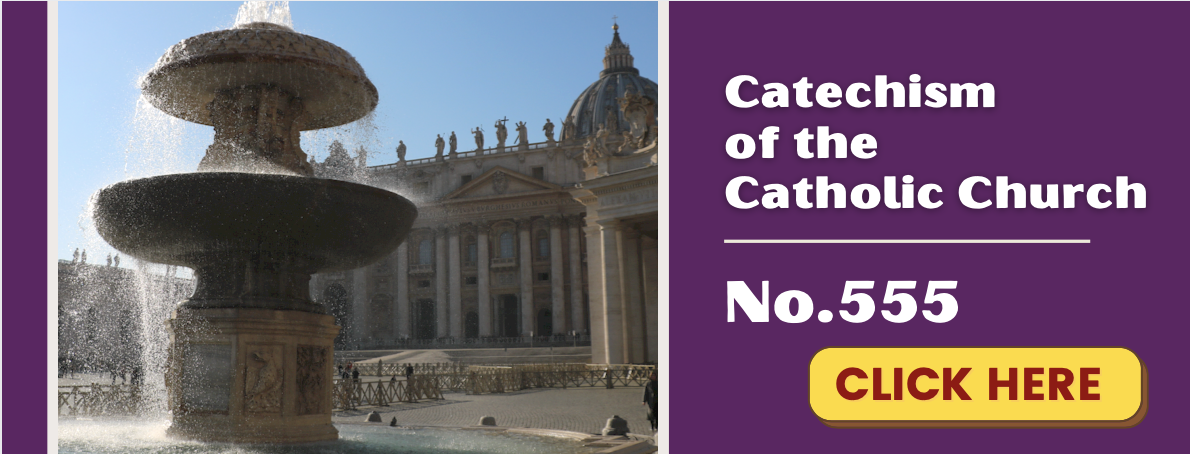Friday of the Second Week of Advent



“For greater things you were born.” (Ven. Mother Luisita)
FRIDAY, December 10th Mt. 11: 16–19 Memorial Our Lady of Loreto Jesus said: “Wisdom is vindicated by her works.”
In the Litany of Loreto, Mary is called “Seat of Wisdom.” The story of Our Lady of Loreto is provided at the end of the Points. We refer you to EWTN Litany of Loreto for the text of this beautiful prayer to offer to Our Lady of Loreto on her Memorial Day.
In this time of Advent – awaiting the Birth of the Lord Jesus, let us walk with Mary as she responds to the Angel’s news that her cousin Elizabeth, who was thought barren, is with child, “for nothing is impossible with God.” (Lk 1:37)
10 BEAUTIFUL THINGS ABOUT THE VISITATION… By Fr. Ed Broom, OMV
Mary is a model teacher, guide, and inspiration, as well as our life, our sweetness, and our hope to all who raise their eyes to her with love. In the beautiful prayer of Saint Bernard, the Memorare, we pray with confidence: Remember, O gracious Virgin Mary, that never was it known that anyone who fled to your protection, implored your help, or sought your intercession was left unaided.
May is the month of Mary and it concludes with one of the most beautiful Marian Feast days— the Visitation of the Blessed Virgin Mary to her cousin Saint Elizabeth. Many superb spiritual lessons can be learned from this Marian gem, which is also the 2nd Joyful Mystery of the Rosary. Let us descend into this “Spiritual gold mine” and grab on to the many excellent treasures.
1. CONNECTION BETWEEN THE ANNUNCIATION AND VISITATION. The last part of the Annunciation/Incarnation ends with Mary’s “Fiat”, that is to say, Mary’s “Yes” to God. The exact words are: “Behold, I am the handmaid of the Lord, let it be done to me according to your word.” (Lk 1:38) In that moment, one of the most sublime moments in the history of the world took place: the Incarnation of the Son of God. That is to say, the Second Person of the Blessed Trinity descended from His heavenly throne and became Incarnate (man) in the most pure womb of the Virgin Mary! In rapt awe, we humbly adore this sublime mystery!
2. COMMUNION AND FRATERNAL CHARITY. Mary did not keep the “Gift” of Jesus to herself, but went in haste to share the gift with others. She started a 90 mile journey, traveling uphill to Ain Karim to visit her cousin Elizabeth and also to help her in her need. Pope Benedict XVI in his Apostolic Exhortation Sacramentum Caritatis insists that Mass and Holy Communion must transform us into ardent missionaries who bring the Good News of Jesus to the whole world!
3. IN HASTE. Mary did not procrastinate, put off, delay, make excuses, rationalize or justify postponing her trip; rather, she followed the inspiration of the Holy Spirit and moved immediately. Lesson! Upon receiving good inspirations from the Holy Spirit, we should be both docile and prompt to respond!
4. TRAVEL WITH MARY AND TALK TO HER. Enter into an Ignatian contemplative scene and imagine traveling with Mary. Notice her joy, her quick pace, her awareness of Jesus within her, her determination to carry out God’s will despite the possible obstacles—all of these make up your long trek to Ain Karim with Mary. Admire her majesty, but also be inspired by her humility and simplicity. During this long journey together, open up your heart and talk to Mary about what is going on in your life. Why not even tell her what is most heavy on your heart! Mary is the best of listeners!
5. EUCHARISTIC PROCESSION. Remember! The little Jesus is already present in the womb of Mary. Therefore, as you travel, remember that this indeed is a “Eucharistic Procession” — a Corpus Christi procession! Mary always wants to draw us closer to Jesus! Her last words at the wedding Feast of Cana were: “Do whatever He tells you!” (Jn 2:5) Great advice! Beg for the grace to have greater faith, love, and devotion towards Jesus truly present in the Eucharist!
6. JOY! This is the 2nd Joyful Mystery. Being with Jesus and Mary is the true and authentic source of joy. Mary’s canticle, her Magnificat, emphasizes this truth: “My soul proclaims the greatness of the Lord and my spirit rejoices in God my Savior!” (Lk 1:46) May we always seek joy in this authentic source: JESUS THE LORD!
7. GREETING! Most likely, Mary greeted Elizabeth with the typical Jewish greeting, SHALOM— peace be with you! Our homes, families, communities, groups, parishes, activities, all should be characterized by a “Shalom” atmosphere. A warm, welcoming, and inviting milieu should prevail. An essential note of apostolic effectiveness is that of creating this warm and welcoming environment. Mary teaches us this by her greeting!
8. BABY JOHN LEAPS FOR JOY! At the sound of Mary’s greeting, the infant John leaps for joy in the womb of Saint Elizabeth! What is happening here? Jesus, even before being born, is acting as Redeemer by freeing His cousin John in the womb from the bondage of Original Sin. Message! Contact with Jesus and Mary through prayer undoubtedly will serve as a powerful means to diminish the grip of sin upon us, and to eventually shatter the binding force and slavery of sin. Sin indeed is slavery! Jesus and Mary came to give us true freedom, the freedom of the sons and daughters of God! “O Mary, conceived without sin, pray for us who have recourse to thee.”
9. PRO-LIFE PASSAGE “PAR EXCELLENCE!” Both of these women in the modern world could be candidates for abortion. Why? One was very young, Mary; whereas, the other was very old, Elizabeth. However, both women had infinite trust in God’s Divine Providence. Elizabeth gave birth to the great Saint John the Baptist and Mary gave birth to Jesus, the Son of God! At all times, by our meditation on the mystery of the Visitation may we be staunch defenders of human life, from the moment of conception until natural death. God is the author and origin of life, and only He has the right to take life to Himself!
10. MARY AND ACTIVE SERVICE. Love for God cannot limit itself to words, but must manifest itself in actions, in service, and in seeing Jesus truly present in others! Not only did Mary greet Elizabeth, but Mary also actively served her aged, pregnant cousin in her need! With a little bit of imagination (Ignatian Contemplation), we can picture Mary and accompany her in active service!
What might have been some of the activities that Mary would have carried out with joy and love? Walking to the well to get water— no “running water” back then! Sweeping the dust and dirt from the humble home—no vacuum cleaners 2000 years ago! Washing and hanging clothes out to dry— no expensive washing machines and dryers to quicken the work. Cooking and baking, preparing the meals, setting the table, washing the dishes and cleaning the kitchen after eating—there was no Burger King, Pizza-Hut, or KFC available! Nor were there overflowing refrigerators to be checked and emptied of the waste every week!
All of these humble, domestic chores Mary would have carried out with the greatest love and attention to help her cousin Elizabeth. Remember! Holiness does not depend on the greatness of the act, but on the great love that accompanies every action— even if it appears to be small and insignificant in the eyes of the world. The secret of the sanctity of Saint Therese and Mary in the mystery of the Visitation, is to do the ordinary things of daily life with extraordinary love! That is sanctity!
In conclusion, let us contemplate the life, words, gestures, and actions of Mary, most holy, especially in the Mystery of the Visitation, and be motivated to transfer our contemplative life into active service of our brothers and sisters, who are really Jesus Christ! “Whatsoever you do to the least of my brothers, that you do unto me.” (Mt 25-30)
OUR LADY OF LORRETO…
Not all know the story of Our Lady of Loreto. The Holy House of Loreto comprises three walls of stacked stones and is safeguarded beneath an ornate Renaissance-era basilica. It is believed that Mary grew up in this house and that the Annunciation took place in it.
Saint Pope John Paul II called the Holy House of Loreto the “foremost shrine of international import dedicated to the Blessed Virgin” in 1993.
According to tradition, angels miraculously carried the Holy House from Nazareth to Loreto. Throughout the basilica are numerous artistic depictions of angels flying over the seas with the house.
Another tradition states that a Greek merchant with the surname Angelos paid crusaders to move the house to Italy as part of a wedding dowry for his daughter, betrothed to a nobleman of high estate.
In either case, according to tradition the Holy House arrived in Loreto during the night December 9-10, 1294, and was placed next to a road among a field of laurel trees. The Latin word for laurel is lauretum, which became Loreto in Italian.
Over the centuries, countless pilgrims have visited Loreto, including many saints. There have also been numerous miracles and conversions.